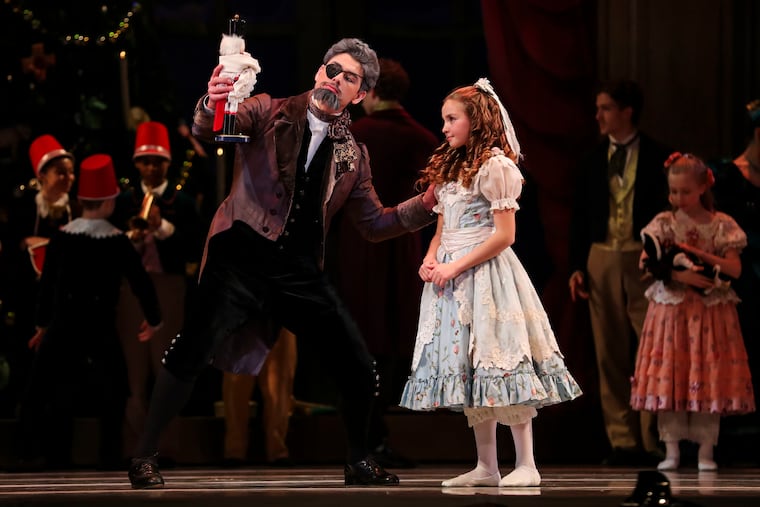After shut-down, Philadelphia Ballet’s Nutcracker bounces back
Ticket sales are critical to the ballet’s finances.

In a significant bright spot on the arts scene, Philadelphia Ballet’s Nutcracker returned last month and managed to lure back audiences in fairly large numbers.
The company was able to perform all 25 of its planned performances of the holiday favorite (one was filmed, without an audience), drawing nearly 35,000 ticket buyers to the Academy of Music.
That’s lower than the 40,500 seats sold for 29 Nutcracker performances in 2019, the last pre-COVID run. But this season’s results come within 1% of the ticket goal the company set for itself, which was 75% of goal for a normal year. Total revenue was nearly $2.2 million — down from 2019, when the ballet’s production of the George Balanchine setting to Tchaikovsky’s score brought in $2.6 million.
The Academy of Music this year was filled, on average, to about 60% of its capacity for the Nutcracker.
Ticket sales from the annual show are critical to the company’s financial well-being, with that one production typically bringing in about half of a season’s total ticket revenue.
“We had what I would say is an aggressive goal for a unique year,” said Shelly Power, the ballet’s executive director. “Although it wasn’t as big a goal as in 2019 — we were conservative — it was still aggressive and fell within one percent of our goal. We were just blown away by the support.”
Last season, the pandemic forced its cancellation, idling dancers, orchestra musicians and other members of the large cast and crew.
This year, the show went on, though it did not arrive totally unscathed. Gone was the boy choir accompanying the “snow” scene that ends the first act. Two performances ended up being danced to recorded music rather than live orchestra after some positive COVID test results. Occasional positive tests forced artist changes, including some in the orchestra led by conductor Beatrice Jona Affron.
“I think Bea did a really good job of making sure the balance was good if there was an instrument here or there missing,” said Power. “If the harp wasn’t there, Martha [Koeneman, company pianist] played the part on the piano and things like that. I don’t know how much the audience knew that unless someone was really familiar with the orchestra.”
Over the course of the run, testing turned up less than 7% of positive cases in the orchestra, dancers, crew, staff, students in the cast and chaperones, Power said.
Even with pandemic challenges and lower ticket sales, Power says, in a year like this one it was an accomplishment to mount the production at all and to get through the entire run.
“It was so incredible to walk in the theater and sit down amongst all of those families and children — all of us, our hearts were really full. There was a sense of pride, bringing it back.”